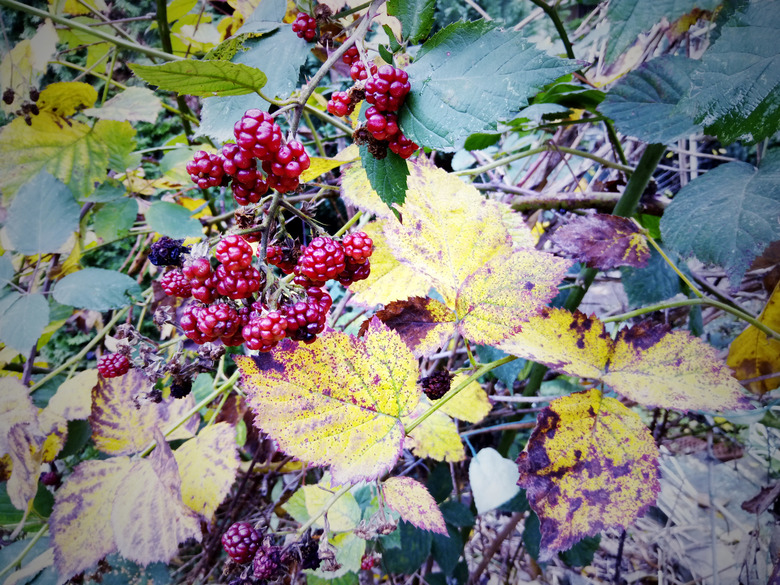How Are Blackberries Dispersed?
About Blackberries
About Blackberries
Blackberries (the plant, not the phone), are an invasive, non-native plant that has become so entrenched in New World ecosystems that many of us would be hard put to imagine the wild without them. The dark compound-seeded fruits, formed of clusters of mini-fruits called drupelets, are easy picking. Sweet, tart, and with a heady fragrance, they are enjoyed by humans and wildlife alike.
Runners.
Runners.
Blackberries extend their range through two primary methods. The first method is through runners. A biennial plant, the first year's canes form a basis for the second year's growth, which will combine both fruiting canes and underground runners establishing new plants. The original plant will die at the end of the second year, but the colonized plants will survive and continue the expansion.
Seeds.
Seeds.
The second method of spreading is by seed. Every drupelet of a compound fruit contains a seed, and the fruits are very much loved by birds and mammals alike. The main way seeds are spread is through animals eating them, digesting them, and then excreting them.
Survival Success
Survival Success
By using two different methods of dispersal, one asexual producing clone plants, and one sexual and producing new genetic combinations, blackberries provide themselves with superb techniques to survive and adapt.
References
Cite This Article
MLA
Robinson, Peg. "How Are Blackberries Dispersed?" sciencing.com, https://www.sciencing.com/blackberries-dispersed-5200688/. 22 November 2019.
APA
Robinson, Peg. (2019, November 22). How Are Blackberries Dispersed?. sciencing.com. Retrieved from https://www.sciencing.com/blackberries-dispersed-5200688/
Chicago
Robinson, Peg. How Are Blackberries Dispersed? last modified March 24, 2022. https://www.sciencing.com/blackberries-dispersed-5200688/
